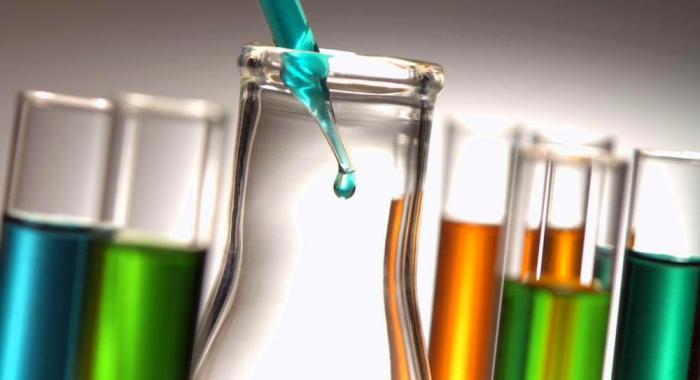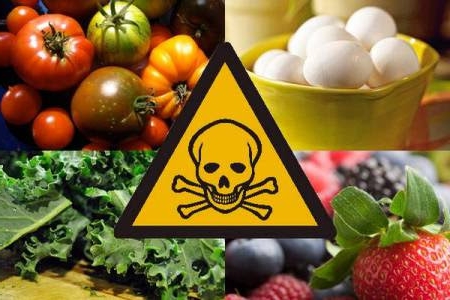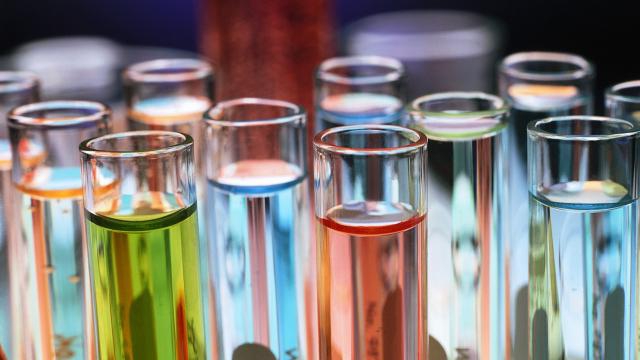If handled ineptly, even the most useful appliances and household chemicals can harm. Some of them even require special storage conditions and careful use. In order to act correctly and not harm nature or one’s own health, it is necessary to know what hazard classes of objects exist and what substances belong to them. We’ll talk about this.
Hazardous substances
The global chemical industry annually releases about 1-2 thousand new products. According to some estimates, a huge number of substances are now available on the world market, with only a small part of them studied for toxicity. There are many applications for chemicals.
But that which can be perfectly suited for one purpose in another situation can do much harm. Household chemicals, reagents, some compounds and other substances, if used improperly, can threaten not only health but also life. That is why it became necessary to introduce a conditional value showing how much this or that element can harm, and what kind of caution should be observed in contact with it.

Hazard types
The threat can come from the flammability and instability of the substance, and from toxicity, harmful effects on human health and the environment, and many other factors. That is why it is customary to divide substances also on this basis. Factors may include the following:
- Chemical. It is present if the substance emits any vapors or when it comes into contact with air or water, heating and other simple manipulations, an active reaction occurs during which toxins are formed in a concentration hazardous to humans and the environment.
- Biological. Medical waste, blood of a potentially sick person, personal use equipment, etc. - all this can serve as a source of infection for the rest. Therefore, all this can also be conditionally attributed to dangerous factors.
- Radiation. In addition to chemical hazards, a substance can eventually cause radiation sickness. That is, it can be a source of radiation, polluting the environment and harming all living things.
- Flammability and explosiveness. In addition to general toxicity, any substance can be flammable. The same applies to the danger of an explosion causing mechanical damage.
In this way, harmful factors can be very different. And, nevertheless, it was decided that it would be more convenient to divide the substance in a slightly different way - according to how serious damage they could cause. And here, too, there is a classification of its own, for example, there is the concept of "fire hazard class", which allows us to determine that the harm that can come from an object lies in its relatively low inflammability, and not toxicity. But this characteristic, as a rule, does not apply to chemicals, but to wires and electrical appliances.

Classification
Much more common, compared with the division into types of harmful effects, ranking by degree of danger. This is a very conditional indicator that only provides guidance, that is, evaluates a potential threat. In different situations, the same substance can either be completely harmless or deadly.
According to GOST, all substances are divided into four categories, however, hazard classes of waste have already 5 subcategories. But more on that another time. After all, it is also important to find out how substances are divided into categories.

Classification criteria
There are several ways by which you can determine to which category hazardous substances should be assigned. Firstly, it is an experimental method based on an assessment of how a particular substance affects a living organism. Secondly, it is a calculation method that uses existing knowledge about the toxicity of certain substances. But it is not very effective, because it does not take into account some restrictions.
Finally, modern scientists use specially designed computer programs that determine the hazard class of substances with little or no human involvement. But all the same, the criteria for referring to certain categories are very arbitrary. The same can be said when it comes to the topic of waste hazard classes. True, then they speak not only of a chemical, but also of a biological threat, so these rankings cannot be called completely identical, although they overlap.

Grade 1
This includes the most harmful substances, which are extremely toxic. There are more than 30 of them, so we will list only a few that can be encountered even in everyday conditions:
- Mercury and its compounds - affect the nervous system, liver, kidneys, gastrointestinal tract.
- Nicotine - a neurotoxin, a carcinogen, is especially dangerous for insects and cold-blooded animals. Poisoning can cause both a single high dose and systematic use for many years.
- Ozone is a powerful oxidizing agent, at high concentrations it irritates the respiratory organs, binds cholesterol into insoluble forms, and male fertility is negatively affected.
- Acrolein - causes profuse lacrimation, irritates the mucous membranes, at the beginning of the XX century it was used as a chemical weapon.
- Lead oxides - accumulation in the body leads to poisoning and damage to the liver, cardiovascular and endocrine systems.
- Dioxins - suppress immunity, disrupt the reproductive system, adversely affect all metabolic processes, causing the state of the so-called "chemical AIDS".
- Strychnine - previously used as a poison for rats and a pesticide, is used in medicine in small doses.
- Potassium cyanide - blocks cellular respiration, as a result of which a person dies from interstitial hypoxia.
Obviously, hazard class 1 is a really serious label. So do not neglect protective measures. By the way, hazard class 1 waste also requires careful handling. As a rule, this category includes objects containing the above substances, for example, mercury lamps, batteries, etc.

Class 2
There are also about 30 substances in this category, so only the most common are worth listing:
- methanol or industrial alcohol - the strongest poison, in the worst case leads to blindness and death;
- arsenic and all compounds - used in therapeutic doses in medicine, but at higher concentrations it is extremely toxic, causes CNS depression, has a carcinogenic effect;
- chlorine - when inhaled, causes pulmonary edema and suffocation;
- hydrochloric acid is an extremely caustic substance, causes severe chemical burns on contact with the skin and mucous membranes, fumes also have an irritating effect;
- nitrites - bind hemoglobin, disrupting the transport function of the blood and causing severe illness;
- fluorine - has an extremely irritating effect, with direct contact with the skin causes a severe thermal burn;
- sulfuric acid - a very aggressive substance, a strong solvent;
- selenium - a trace element necessary in the human body, but in case of an overdose it causes poisoning, symptoms resembling food;
- chloroform - even with a fairly short contact, it causes CNS depression, headache, fatigue, presumably has a mutagenic and carcinogenic effect;
- formaldehyde - in small doses received chronically, causes depression, sleep disturbances, loss of strength, in higher (60-90 ml) lethal; carcinogen negatively affects the female reproductive system.

Despite the fact that substances included in the second hazard class do not cause severe disturbances immediately in most cases, their cumulative effect can be even more harmful than chemicals from the previous category.
Grade 3
These include substances that can cause significant harm to humans if handled improperly:
- aluminum compounds - metal dust can cause pulmonary fibrosis when ingested;
- gasoline - causes acute and chronic poisoning, inhalation of vapors can provoke an addiction similar to alcoholic;
- manganese compounds - when ingested, they can cause swelling, a chemical burn, in addition, they reduce appetite and can cause mental disorders;
- silica gel - when working with it, it is necessary to protect the respiratory system, may contain elements that contribute to the development of cancer;
- copper compounds - can cause discoloration of the skin and hair, changes in the lungs;
- nitric acid - fumes cause irritation of the respiratory tract, if a substance gets on the skin, poorly healing ulcers form;
- trichlorethylene - an industrial solvent known for its volatility, has a narcotic effect, at high concentrations inhibits respiratory and cardiac activity;
- Nickel compounds - cause allergic reactions, changes in the lungs, rash.
Hazard class 4
Finally, the latter category includes substances that can harm the environment and human health only in extremely high concentrations:
- kerosene - irritates the respiratory organs and causes a cough, cases of poisoning are quite rare;
- iron and its compounds - an excess in the body causes hemochromatosis, inhibits the antioxidant system;
- ethanol, or food alcohol - causes intoxication, and with systematic use, dependence (alcoholism);
- ammonia - in high concentrations toxic to brain tissue, causing edema;
- methane is generally safe, but can cause an explosion or fire, the fire hazard class of this gas is quite high.
It may seem that these substances do not pose a threat at all. But still, hazard class 4 was assigned to them not in vain, so when working with them it is worth observing certain precautions.

Legal regulation
Russian laws protect the safety of citizens. So, basically the use of chemicals is regulated by the following legal acts:
- "On the sanitary and epidemiological well-being of the population" (last revised on 06.23.2014) No. 52-FZ;
- "On Environmental Protection" dated 10.01.2002 No. 7-FZ.
For certain types of hazardous substances, special regulatory documents also apply:
- "On the safe handling of pesticides and agrochemicals" (last revised on 07/19/2011) No. 109-FZ;
- "On the Use of Atomic Energy" (last revised on 07/02/2013) No. 170-FZ;
- "On state regulation of genetic engineering activity" (last revised on 10/04/2010) No. 86-FZ.
The hazard classes of wastes, including radioactive, and the rules for working with them are also regulated by laws and other legal acts.
Storage, use and disposal
Due to the fact that all of the above substances are dangerous to one degree or another, special rules apply to them, which allow to minimize the likelihood of harm. Some can only be interacted with in seals, while others require work in a special protective suit and under a fume hood. This depends not only on what hazard class of the substances is assigned to one or another chemical, but also what method of exposure to the body is characteristic of it.






